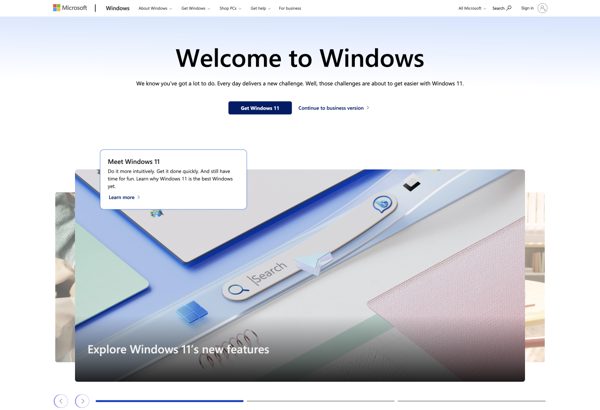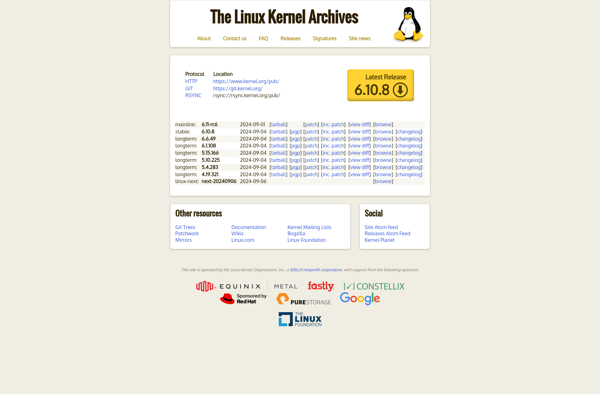OpenBSD
OpenBSD is a free and open-source Unix-like operating system focused on security, cryptographic implementations, correctness, and code auditing. It is known for having the most secure default settings and proactive security features.

OpenBSD: Secure Unix-like Operating System
Free and open-source Unix-like operating system prioritizing security, cryptographic implementations, correctness, and code auditing with a strong focus on proactive security features and most secure default settings
What is OpenBSD?
OpenBSD is a free and open-source Unix-like operating system derived from BSD. It focuses on security, code correctness, and cryptography implementations.
Some key features and characteristics of OpenBSD:
- Strong focus on security through default secure configuration, proactive security features like W^X, ASLR, etc.
- Frequent code auditing and cleaning to remove bugs and potential vulnerabilities
- Considered the most secure OS available, the "world's most secure operating system"
- Does not include proprietary or closed-source code, entirely open-source
- Uses cryptographic software and hardware random number generators for strong entropy
- Relatively lightweight and fast compared to Linux
- Runs on several hardware platforms like x86, ARM, PowerPC, SPARC64
- Includes firewall, VPN, HTTPS and other network security tools
- Supported commercial version available through the OpenBSD Foundation
Overall, OpenBSD excels in secure design for critical network infrastructure deployment. Its dedication to security, clean code, openness and documentation makes it a popular choice for firewalls, routers, DNS servers, and related systems.
OpenBSD Features
Features
- Focus on security
- Open source
- Runs on multiple hardware platforms
- Includes cryptographic libraries
- Emphasis on code auditing
- Secure by default configuration
- Proactive security features
Pricing
- Open Source
Pros
Very secure
Free and open source
Strong cryptography support
Highly audited code
Runs on many platforms
Cons
Limited hardware support compared to Linux
Smaller user community than major Linux distros
Less software available than Linux
Official Links
Reviews & Ratings
Login to ReviewThe Best OpenBSD Alternatives
Top Os & Utilities and Operating Systems and other similar apps like OpenBSD
Here are some alternatives to OpenBSD:
Suggest an alternative ❐Windows 10
Windows 10 is the latest version of Microsoft's operating system, released in 2015. It builds on the core foundations of Windows 7 and 8 and brings back the familiar Start menu while also introducing new features.Some key new features and improvements in Windows 10 include:The return of the Start Menu...

Ubuntu
Ubuntu is one of the most popular Linux distributions available today. It is based on Debian and completely free and open source. Some key points about Ubuntu:It has an easy to use and intuitive interface, making it great for Linux beginners.It has a wide variety of official flavors featuring different...

MacOS
macOS is the operating system created and developed by Apple Inc. exclusively for its Macintosh computers and laptops. It was originally named Mac OS X until 2012 and then OS X until 2016, when Apple renamed it to macOS to bring it inline with the branding of its other operating...

Linux Mint
Linux Mint is a Linux distribution built on top of Ubuntu that aims to provide a more complete out-of-the-box experience. Some key aspects of Linux Mint include:User-friendly desktop environment with a familiar workflow for Windows usersComes with a lot of pre-installed software for common tasks like office productivity, internet browsing,...

Arch Linux
Arch Linux is a lightweight, flexible Linux distribution designed for experienced Linux users who want control and customization of their system. Some key features of Arch Linux include:Rolling release model - Arch gets continuous updates rather than point releases, ensuring you always have the latest software.Uses Pacman package manager -...

Elementary OS
elementary OS is a Linux distribution based on Ubuntu that focuses on providing a fast, open, and privacy-respecting computing experience. It comes with a custom desktop environment called Pantheon that features a sleek and intuitive user interface designed for productivity.Some key features of elementary OS include:An app store called AppCenter...

Debian
Debian is one of the oldest and most popular Linux distributions available today. First released in 1993, it is known for its stability, commitment to free software principles, and huge repository of over 50,000 software packages.Some key facts about Debian:It is developed by a worldwide community of volunteers working together...

Linux kernel
The Linux kernel is a free and open-source operating system kernel that serves as the core of Linux operating systems. It was first released to the public by Linus Torvalds in 1991, who wrote it specifically for the Intel x86 hardware architecture.Since then, the Linux kernel has become one of...

Fedora
Fedora is a Linux distribution developed by the Fedora Project and sponsored by Red Hat. It is one of the most popular community-driven Linux distributions and is known for showcasing the latest innovations in open source software on a stable and easy-to-manage platform.Some key features of Fedora include:Uses the RPM...

Manjaro Linux
Manjaro Linux is an open source, independently developed GNU/Linux distribution based on Arch Linux. It aims to provide an accessible entry point for new Linux users, while maintaining the DIY spirit and technical simplicity that Arch Linux is known for.Some key features of Manjaro Linux include:User-friendly graphical installers for quick...

OpenSUSE
openSUSE is a versatile Linux distribution that can be used on desktops, laptops, and servers. It focuses on being easy to use, having up-to-date software packages, and providing flexibility for different types of users.Some key features and information about openSUSE:Sponsored by SUSE Linux and other companies, but community-developedRegular release cycle...

Hello System
hello System is a free, open-source, end-to-end encrypted messaging and voice/video call application. It was created in 2014 by hello Technologies as a secure and private alternative to other messaging apps.Some key features of hello System include:End-to-end encryption - All chats, group chats, media, and calls are encrypted using the...

Subgraph OS
Subgraph OS is a Linux distribution focused on privacy and security for everyday users. It is based on Debian, but incorporates substantial hardening and security enhancements:Integrates comprehensive system hardening like sandboxes, firewalls, etc. to isolate components and limit lateral movement in case of compromise.Uses kernel hardening configurations like GRSEC/PaX to...

Kubuntu
Kubuntu is an officially recognized flavor of the Ubuntu Linux distribution that features the KDE Plasma desktop environment instead of Ubuntu's default GNOME desktop. Kubuntu provides a user-friendly, customizable, and visually appealing desktop experience powered by the latest KDE Plasma technologies.Some key features and characteristics of Kubuntu include:Uses the lightweight...

NetBSD
NetBSD is a free and open-source Unix-like operating system based on the Berkeley Software Distribution (BSD). It was the second open-source BSD descendant to be formally released, after 386BSD, and continues to be actively developed. The NetBSD project focuses on code clarity, modularity, and portability.Some key features and characteristics of...

DragonFly BSD
DragonFly BSD is a free and open-source Unix-like operating system that was forked from FreeBSD version 4.8 in 2003. It places an emphasis on scalability, high performance, and stability.Some key features and technologies in DragonFly BSD include:The HAMMER2 filesystem - an advanced modern filesystem optimized for multi-core systems.The dports package...

IBM AIX
IBM AIX (Advanced Interactive eXecutive) is a proprietary Unix-based operating system developed and optimized by IBM for its POWER architecture-based systems, including Power Systems servers and Systems p workstations. AIX is designed to be a highly scalable, reliable, and securable operating system suitable for handling business-critical workloads and applications.Some key...

HP-UX
HP-UX is a proprietary Unix operating system developed and maintained by Hewlett Packard Enterprise (HPE). It runs exclusively on HP's line of Intel Itanium-based servers.First released in the 1980s, HP-UX is known for its stability, reliability and security features designed for mission-critical workloads. It implements robust virtualization capabilities allowing multiple...

Sabayon
Sabayon is a Linux distribution designed to be beginner-friendly while still providing advanced features for experienced users. It is based on Gentoo Linux and utilizes a rolling release model, meaning users can continually update to the latest versions of software without needing to manually reinstall big new releases.One of the...

Funtoo Linux
Funtoo Linux is a source-based, general purpose Linux distribution that branched from Gentoo Linux in 2008. It was founded by Daniel Robbins, the creator of Gentoo Linux, as an independent project with a strong focus on ongoing innovation and improvement.Like Gentoo, Funtoo utilizes a ports-based build system called Metro that...
